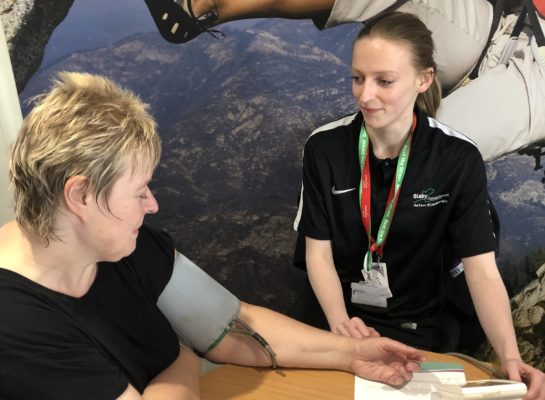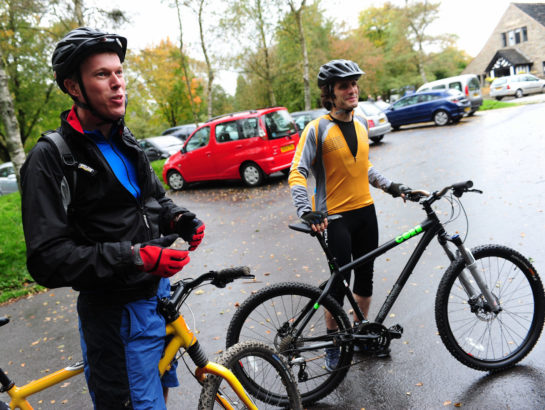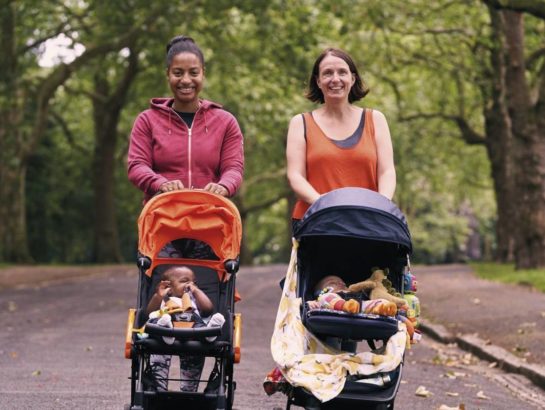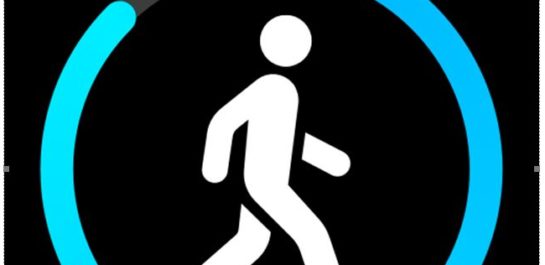I need to develop better plans for doing and maintaining it

Planning how you are going to change your behaviour is just as important as doing it and achieving it. Very few goals are achieved without some level of planning involved.
By planning ahead, you can try and predict what barriers may come up and you can try and overcome them before they arrive or try to avoid them altogether. Also, planning ahead to get the things that inspire you will also help, such as arranging support of friends or childcare. You can also plan what happens when you fall off the wagon, because that’s fine and to be expected, but if you have a plan of what you will do when it happens, it makes it a lot easier to back on track.
To most, their ultimate goal will be too big to simply focus on, you need to look at smaller goals and plan to those to build to the end point. By planning this and deciding on what success is, that goal is much more achievable.
One easy way to plan ahead is to use a planner or work with someone who can help devise one for you. These can be as general or as detailed as you like, it just needs to be achievable and fit in with what you can manage. There’s not much point in planning to run every day if you’ve never run before, it will be difficult to maintain, potential do more harm than good and ultimately demotivate you and you stop. But if you can plan in achievable activity within your week and focus on those sessions, that will be a great start. And remember, you can always build up your plan as you get healthier and fitter, there’s no need to go for the marathon right away! Below is some information and resources for planning activity.

NHS Active 10
The Active 10 app records every minute of walking you do (anonymously). Just pop your phone in your pocket and away you go! The app tracks your steps, helps you set goals, shows you your achievements and gives you tips to boost your activity. Did you know walking briskly, even for 1 minute, counts as exercise? What are you waiting for - take your first steps today!
When starting, focus on simple measures of activity and build up to more detail as you get more active. Begin with things like step counts or number of activities, then build up to using apps or a smart watch for more defined information.
When you have a plan in place, sometimes there’s a need to know what you’ve done. For some people, objective measures are a very strong motivator, whether it’s to achieve a specific milestone or to simply do a bit more than the last time. What you measure can also vary greatly, if you are just getting into activity, you may want to measure your steps or the amount of distance walked. For those are a bit more confident, they can measure heart rate and active minutes. However, for more accurate objective measure, it requires technology, whether that be your smartphone with apps or wearable tech (ie. watches) to monitor. But if you just want to get started, you could simply get a pedometer and make a note of your daily steps on your calendar or note the time it’s taken to jog a certain route. Below are some of the most popular tools people use.
You can have a plan all worked out, what you’re going to do on what days for how many weeks but the most important thing to plan is what support you have and try and plan for all eventualities. Most people who change their behaviour to be more active will have a failure of some kind, the important thing is how to get back on track. ‘What If’ plans are those that you put in place just in case something happens that knocks you off course but you can make plans to either get you back on track as soon as possible or even to prevent it from happening in the first place. Examples of these plans may be;

The weather is terrible
If you plan to do outdoor activities, such as walking , cycling or running, there’s a high likelihood that you will encounter some bad weather (we do live in Britain after all!!). So to prepare yourself for such occasions, have a think about what you could to still do your activity when this happens. This could include having suitable outdoor clothes so you can still go out in reasonable comfort, doing the activity in an indoor setting if possible or have the flexibility in your plans to move your outdoor activities to another time in the week (although the weather could be horrible for many days as we know!).

Support from Friends and Family
To help you with your plan, you may require the help from those around you, in a practical and motivational capacity. If you need someone to look after the kids or cover you at work whilst you fit in your activity time, you need to get this arranged as part of your plan. However, what happens if that support is unexpectedly unavailable? Can you plan in other help when needed? Do you have flexibility to do something else that doesn’t require that support.
Also, you may require the motivational support from those people. If you’re not feeling like doing your activity one day, they can be the ones who give you that kick up the rear and push you into doing it (in a positive way of course!).

Try to remove things that hamper you
You’ll know, or will quickly learn that there are things that you find difficult to overcome when trying to build an active lifestyle. Normally, it’s external factors such as caring responsibilities and work. These are vital and of course we’re not saying to neglect these but can you arrange for these to be done around your activity or get support outlined above. For example, have a defined finish point at work and switch off, even if this is hard if working at home. Other common things tend to be time related, such as getting kit ready in the morning, sitting down on a sofa making it difficult to motivate yourself to get back up, start the evening routine. These things are particularly important the beginning of your behaviour change when you’re trying to build a habit, remove as many barriers and destractors as possible.
Maintaining Activity
It’s one thing starting a new active lifestyle and getting a habit or routine going is a very difficult thing to do, however, you must be able to maintain this to be able to create a habit. You can still use your ‘What If’ plans outlined above and you may want to review these as things become more second nature but it ‘s important that you don’t let your hard work go to waste.
If you suffer a drop in confidence or motivation, one technique you can use to remember those times when you’ve achieved what you want to do. If you’ve stopped going for a daily walk, visualise yourself doing and remember those things that you did when you started and bring them back. Starting again if you’ve fallen off the wagon isn’t a bad thing if it helps you get going again, it should be easier second time around. However, the longer you leave it to get going again, the more difficult it will be from an ability viewpoint but also in terms of maintaining that habit you’ve created. Something you can do is to talk yourself up, tell yourself you can do it, you’ve done it before, you can do it again! Positive self talk is a powerful tool to motivate yourself.
You can also use incentives to help keep you motivated. It’s sometimes seen that once you’ve created that habit, it’s not as much work to keep it going. Build some activities to do with your friends and family, treat yourself every now and again for things you’ve achieved, or give yourself a goal with a prize at the end of it, such as if you walk a distance or number of days in a row, you’ll buy yourself something you wouldn’t normally get yourself. This may help you keep focus and keep going.

Subscribe to our newsletter
The latest updates on Active Blaby, our programmes, success stories, news, events and more…







